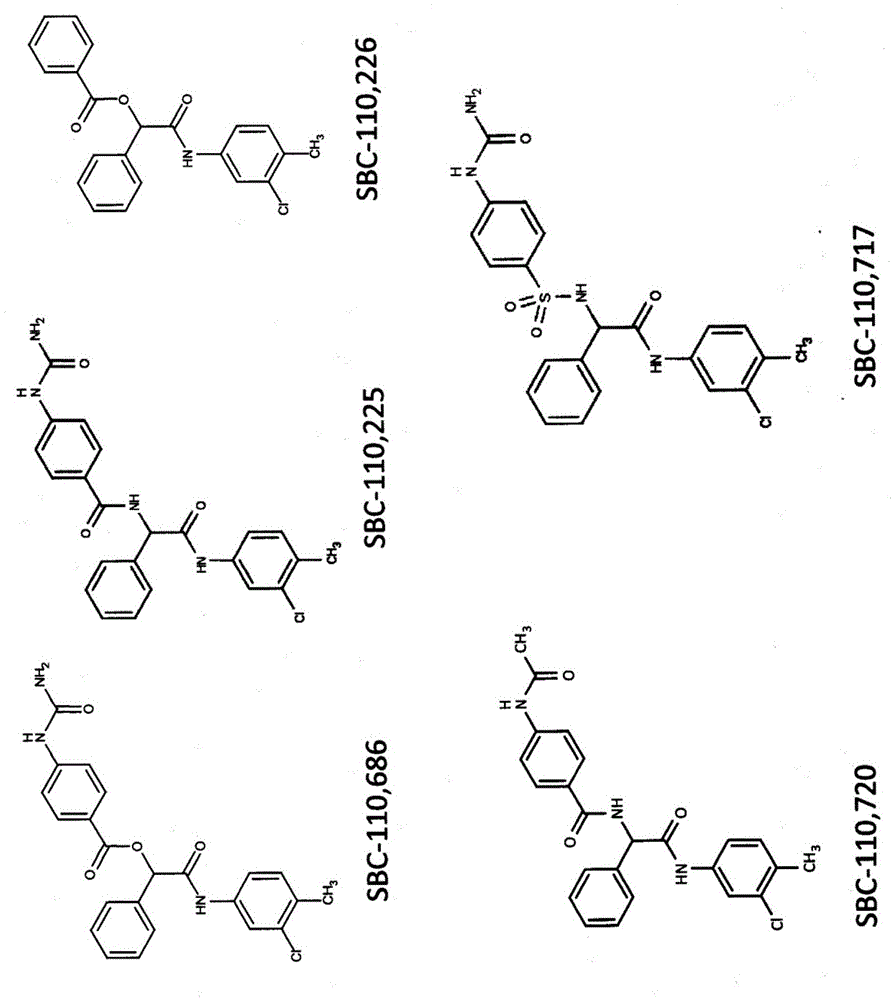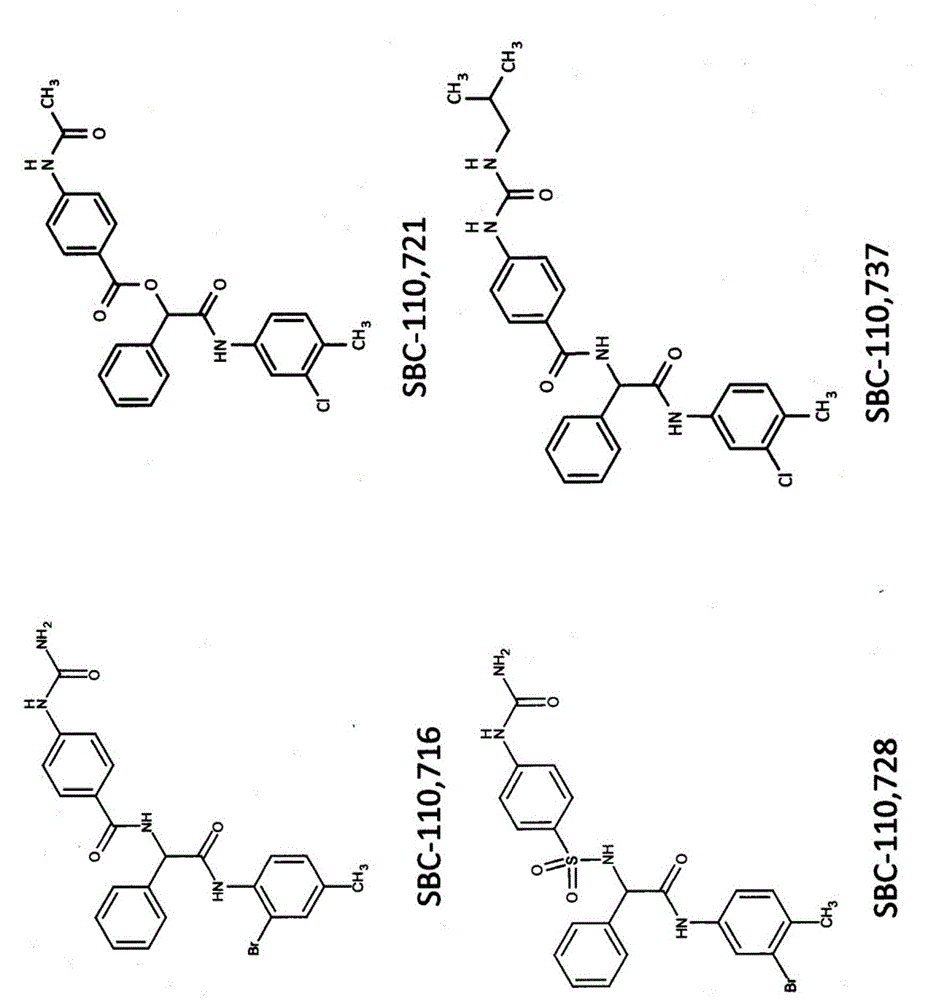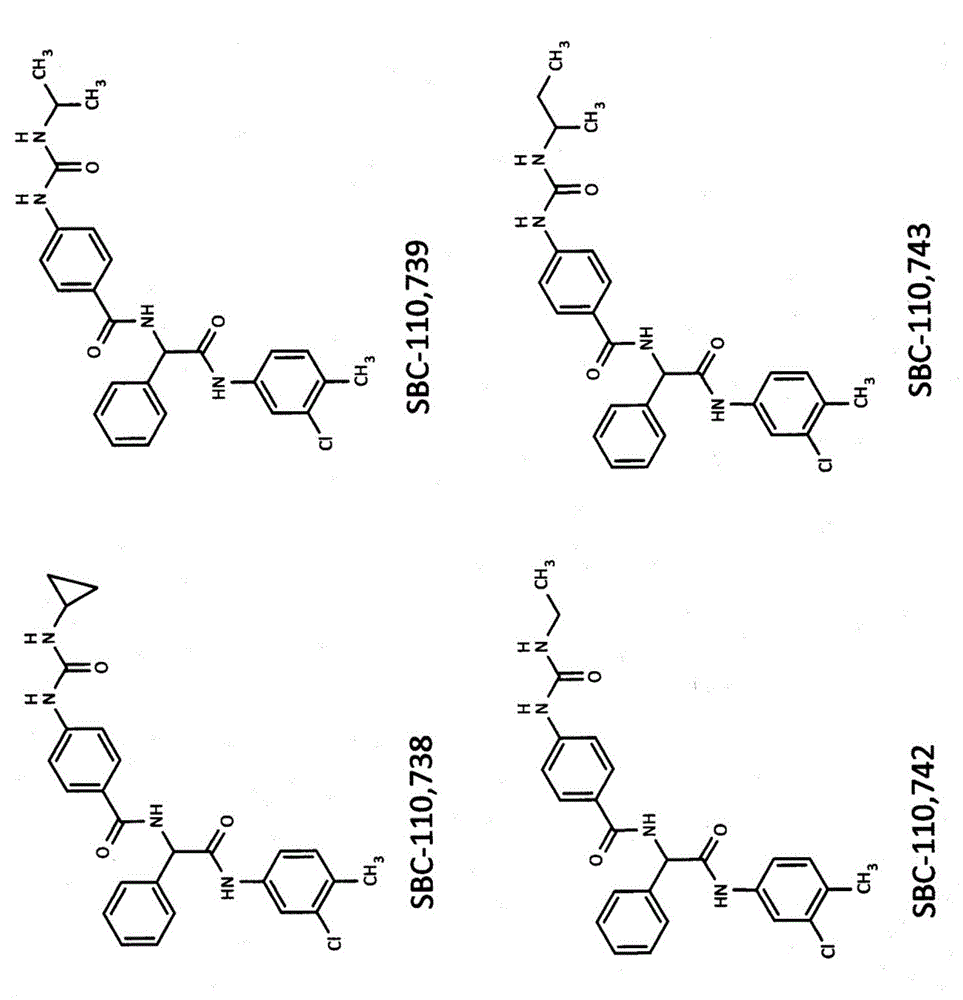Anti-PCSK9 compounds and methods for the treatment and/or prevention of cardiovascular diseases
A compound and heart disease technology, applied in cardiovascular system diseases, active ingredients of heterocyclic compounds, metabolic diseases, etc., can solve problems such as reducing receptor recovery and increasing degradation
- Summary
- Abstract
- Description
- Claims
- Application Information
AI Technical Summary
Problems solved by technology
Method used
Image
Examples
Embodiment 1
[0130] Test for secreted PCSK9
[0131] HEK-293T cells were seeded into 96-well plates in DMEM containing 10% fetal bovine serum medium and incubated overnight at 37 °C. Cells were transfected with the PCSK9 cDNA construct. Compounds were added at different concentrations, followed by an additional 43 hours of incubation. Prior to the PCSK9 assay, cell culture medium was replaced with DMEM serum-free medium containing the same concentration of compound or vehicle and incubated for an additional 5 hours. Cell culture media were analyzed for PCSK9 secretion by immunoblot analysis and imaged and quantified using a LAS-4000 (GE). The results for selected compounds are shown in image 3 .
Embodiment 2
[0133] Test for LDLR upregulation
[0134] A proprietary recombinant assay was used to demonstrate that co-expression of PCSK9 and LDLR DNA in HEK-293 cells resulted in decreased expression levels of LDLR in cells. The present inventors constructed an expression vector of human LDLR under the control of cytomegalovirus promoter-enhancer (pCMV-LDLR). In addition, a construct comprising PCSK9 (pCMV-PCSK9-FLAG) was made. These constructs were used to transfect mammalian cells, and cell lysates and supernatants were subjected to SDS-PAGE and immunoblot analysis using anti-PCSK9 or LDLR antibodies. The blotted data showed that only cells transfected with pCMV-PCSK9-FLAG expressed unprocessed (cells) and processed (medium) PCSK9 ( Figure 4 ). Only cells transfected with pCMV-LDLR showed expression of LDLR in cells ( Figure 4 ). However, cells transfected with both pCMV-PCSK9-FLAG and pCMV-LDLR showed disappearance of the intracellular LDLR band ( Figure 4 ), which provides ...
Embodiment 3
[0137] In situ uptake of Dil-LDL in HepG2 cells
[0138] We also tested the ability of PCSK9 modulator compounds to enhance the uptake of fluorescent DilLDL by HepG2 cells. Briefly, HepG2 cells were plated and grown overnight. Compounds were added to cells followed by the addition of fluorescent Dil-LDL. The cells were washed extensively, and the uptake of fluorescent Di-LDL by the cells was measured using a Synergy2 plate reader ( Figure 7 ).
PUM
 Login to View More
Login to View More Abstract
Description
Claims
Application Information
 Login to View More
Login to View More - R&D
- Intellectual Property
- Life Sciences
- Materials
- Tech Scout
- Unparalleled Data Quality
- Higher Quality Content
- 60% Fewer Hallucinations
Browse by: Latest US Patents, China's latest patents, Technical Efficacy Thesaurus, Application Domain, Technology Topic, Popular Technical Reports.
© 2025 PatSnap. All rights reserved.Legal|Privacy policy|Modern Slavery Act Transparency Statement|Sitemap|About US| Contact US: help@patsnap.com



